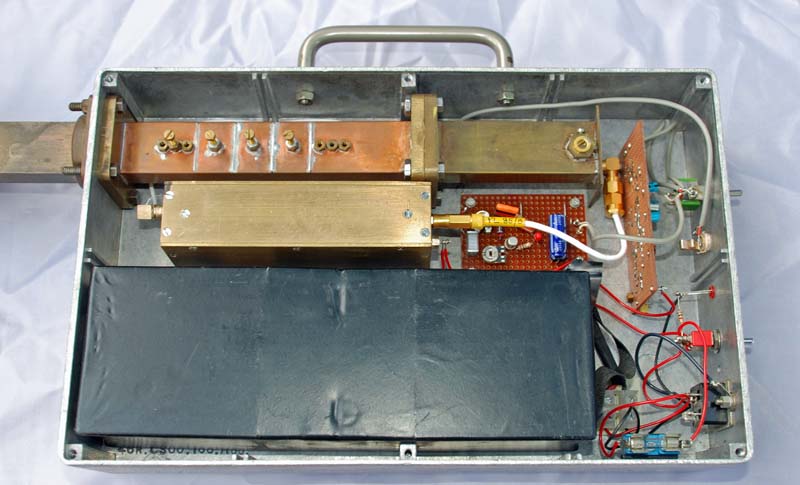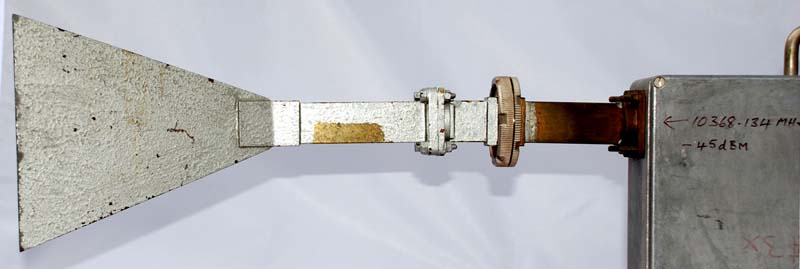|

This crystal controlled 10 GHz built in 1988 was used for receiver and antenna testing. The source is mounted in a sealed die-cast box to eliminate RF leakage. The only signal output is from the waveguide.
The large black object in the base of the die-cast box is a 12 Volt lead acid battery. The module consists of two 6 Volt batteries mounted head to head within a thin plastic outer sleave. These batteries were made for the early mobile phone 'bricks'. They were exchanged if faulty and then found there way into the amateur microwave community. In most cases the battery was perfect and the fault had been with the charger etc. These batteries powered many a piece of equipment in the 1990's and beyond.

The signal is generated by a 96 MHz crystal in a G4DDK 001 local oscillator strip (ca 1986). The 96 MHz is used to drive a 1N23 type diode in waveguide 16. The resulting comb of frequencies produced by the diode is filtered by a three stage iris filter of G3JVL design and gives an output of -45 dBm at 10,368.00 GHz.

The FM deviation on the signal is adjustable to allow for use with both wideband and narrow-band receivers.

When connected to a combination of fixed and variable attenuators, it is possible to estimate the sensitivity of a receiver by increasing the attenuation to a point where the signal is lost. It can also be used for antenna optimisation over a range of approximately 30 metres. The picture shows the source attached to a small horn.
|